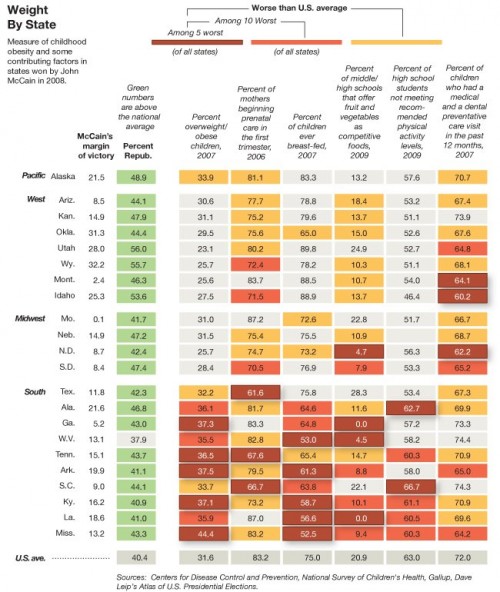Who is responsible for dealing with poverty?
I don’t often respond to comments but this one about the political division caused by obesity is worth further discussion.
I truly resent your statement that Republicans don’t want to have an education, access to health care or access to nutritious food. Such statements not only undermine your credibility but contribute nothing to the discussion.
For the record, Republicans as just as committed to these things as the Democrats. The difference is that the Republicans don’t believe that it is the taxpayers responsibility to provide them.
If not taxpayers, who? The writer does not say.
I thought of this question when I read the new report released by the NYC Center for Economic Opportunity. The center was established in 2006 by Mayor Bloomberg to seek evidence-based ways to reduce poverty in the city.
As the New York Times explains:
Without a flood of food stamps and tax benefits for low-income families, about 250,000 more New Yorkers would have slipped into poverty at the height of the recession…The center concluded that the poverty rate would have been three percentage points higher without federal tax programs passed in 2009 for low-income families and an aggressive city program to enroll New Yorkers who were not receiving public assistance but were eligible for food stamps, coupled with higher food stamp benefits.
Beyond personal damage, poverty is demonstrably bad for the health of cities. Poor people do not buy much. They cause social unrest. They drain public resources. Getting people out of poverty is sensible public policy and has been throughout history.
History also tells us that private charity is never adequate to meet the needs of the poor.
That’s why U.S. taxpayers support food stamp and other food assistance programs to the tune of close to $100 billion a year, as can be seen in the USDA’s budget figures.
The “aggressive city program” paid off. At a time of economic crisis, poverty levels throughout America increased. New York City’s did not.
Isn’t dealing with poverty a core function of government? Isn’t some reasonable level of income equity a core feature of democratic society?
I think so, but await your opinions.



